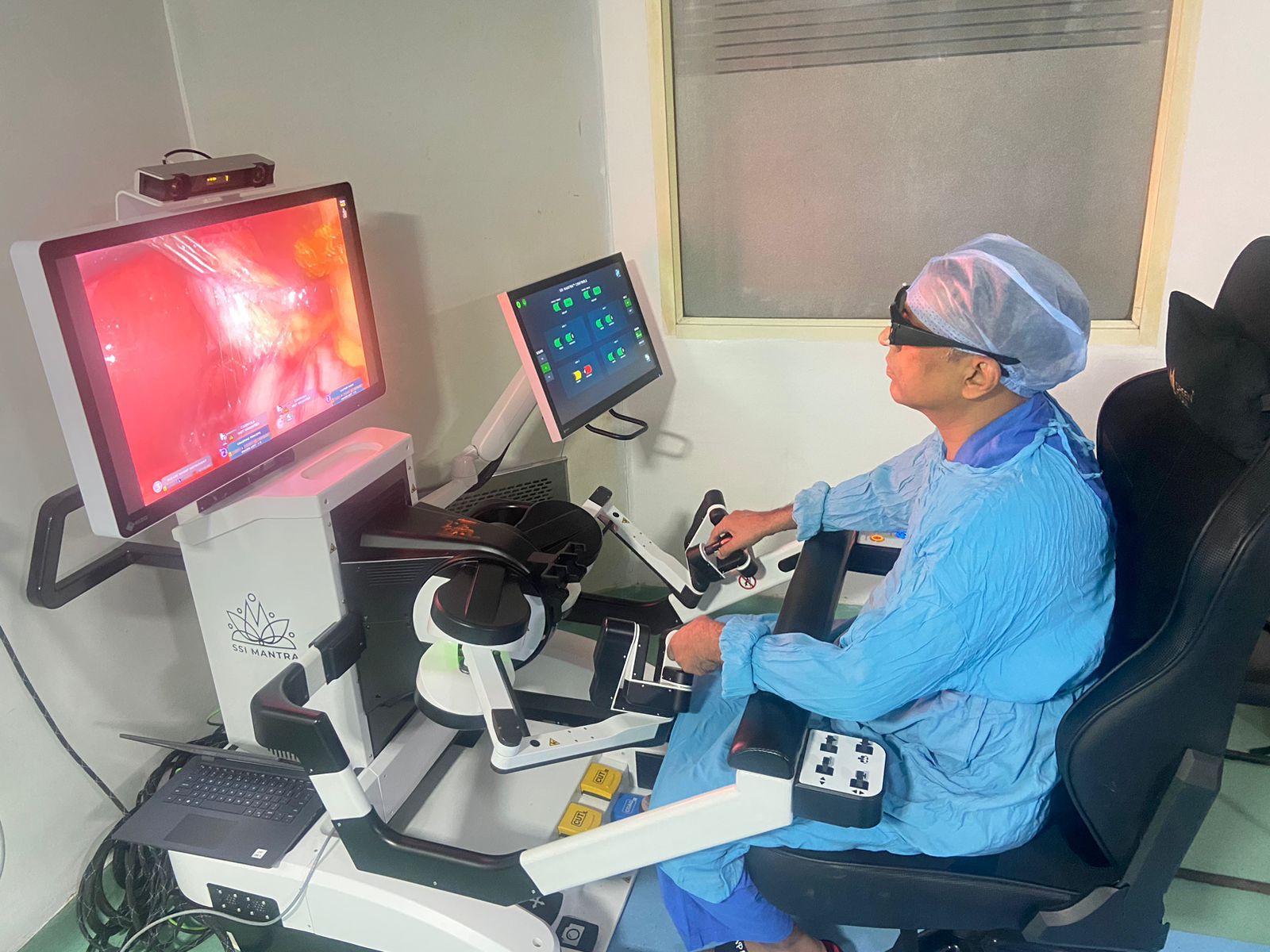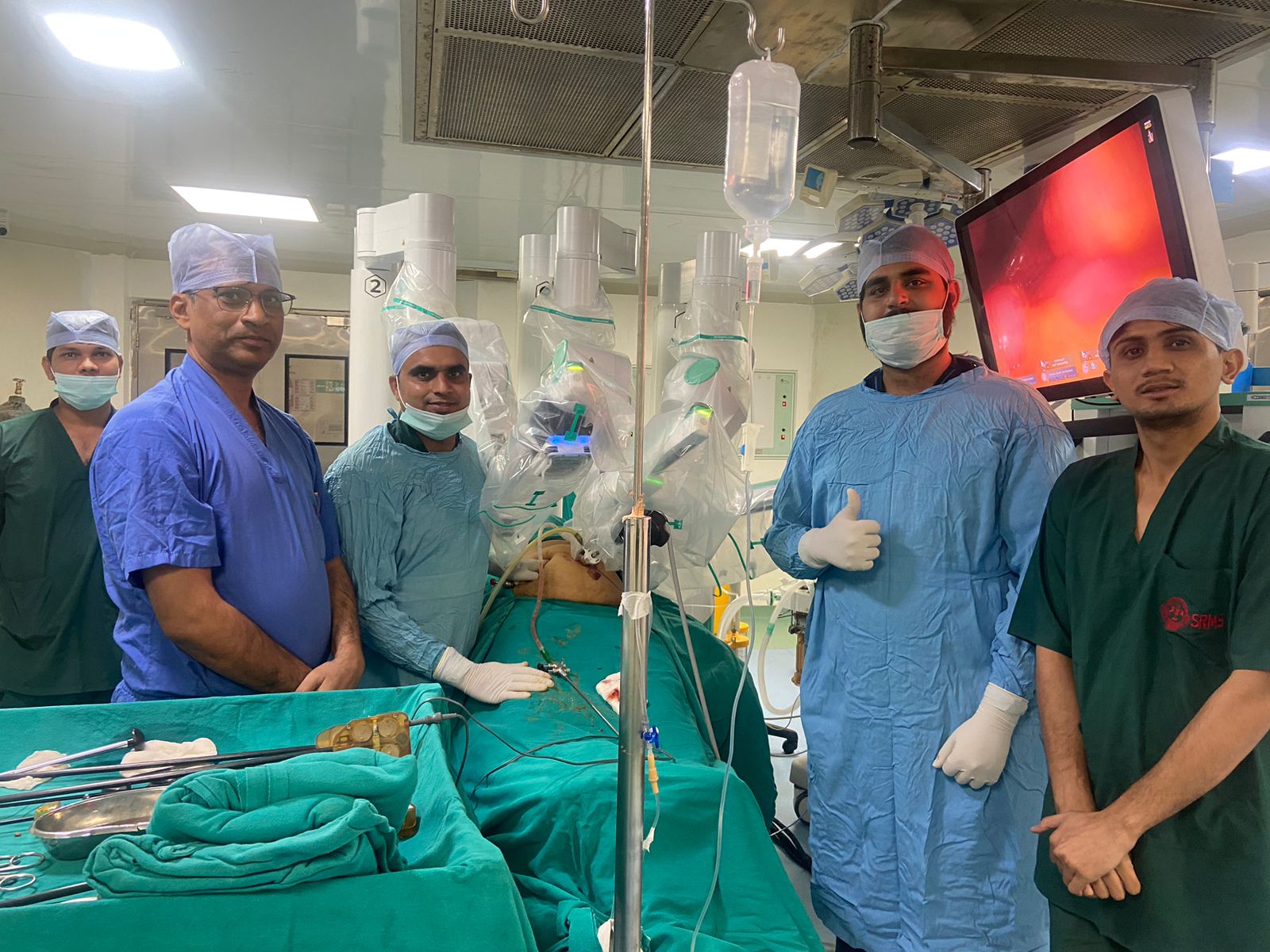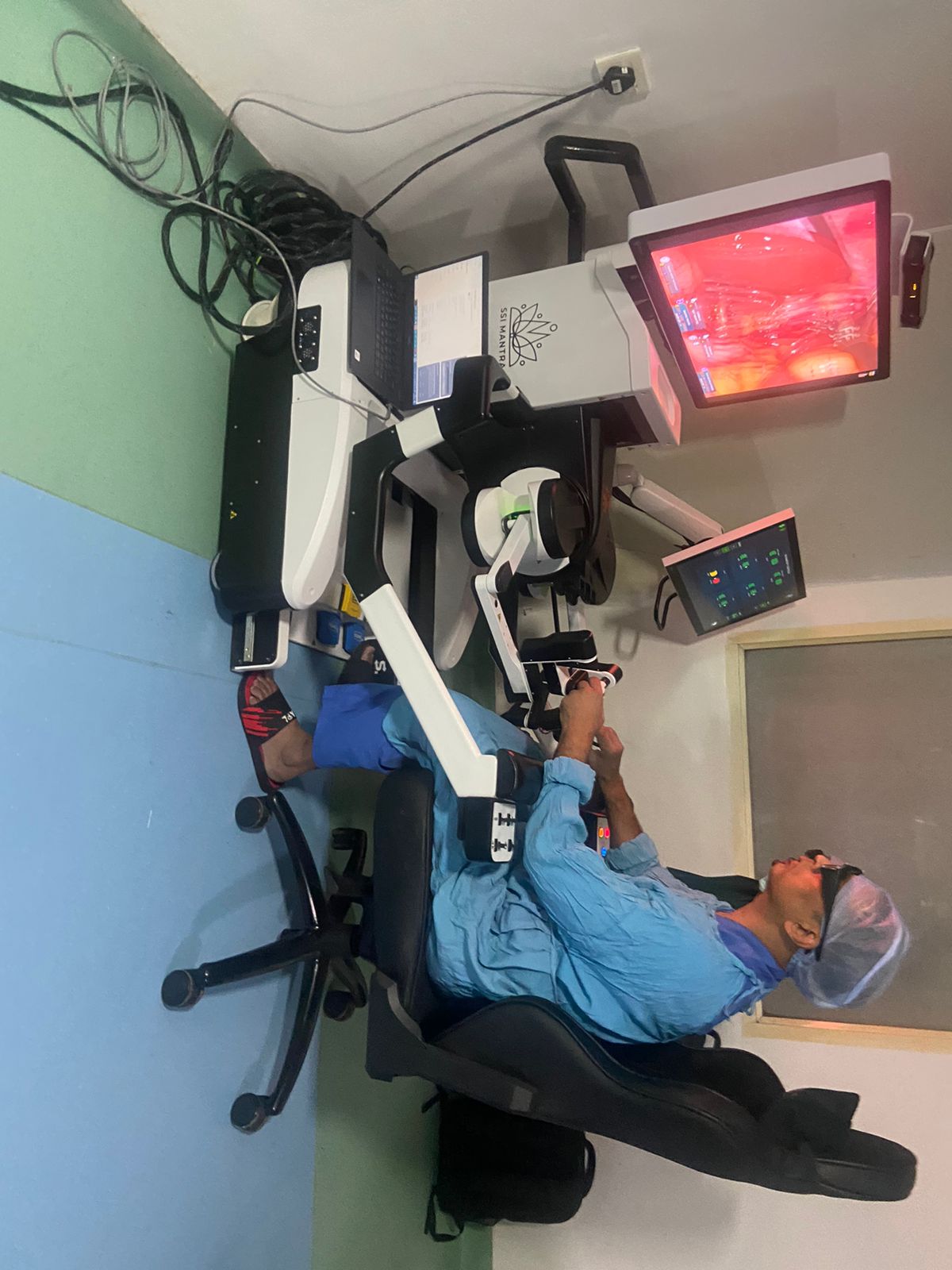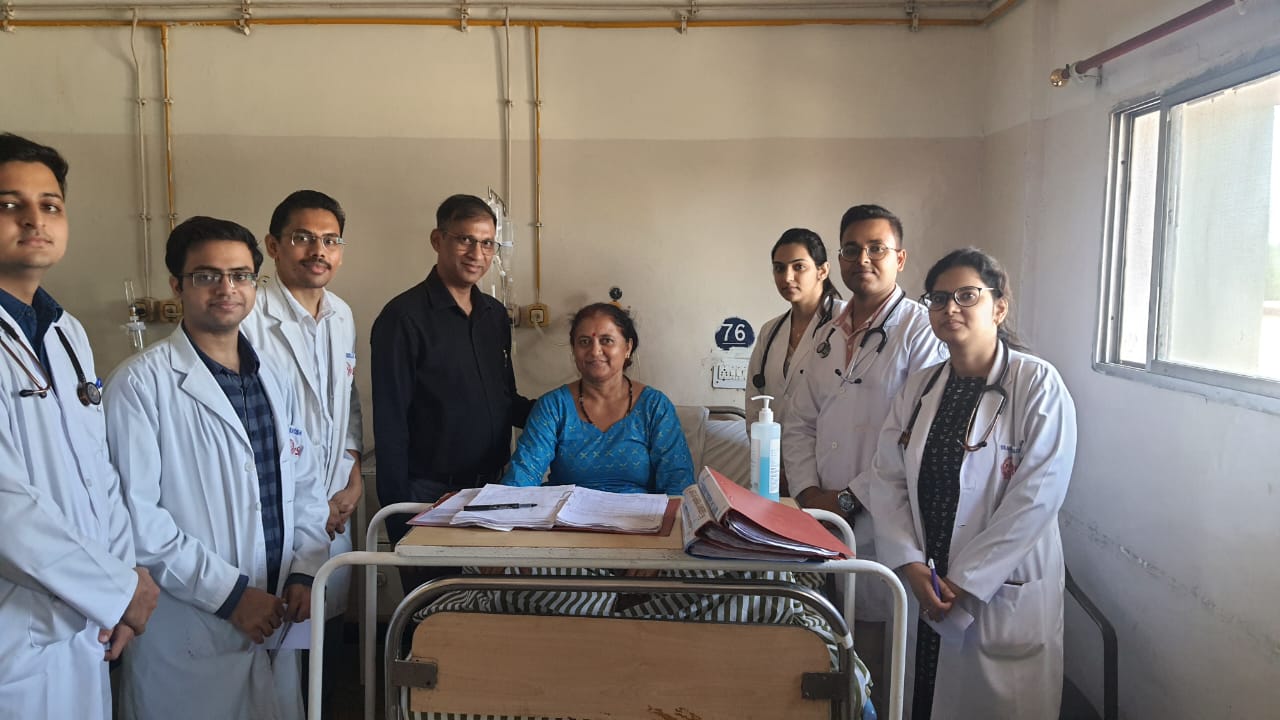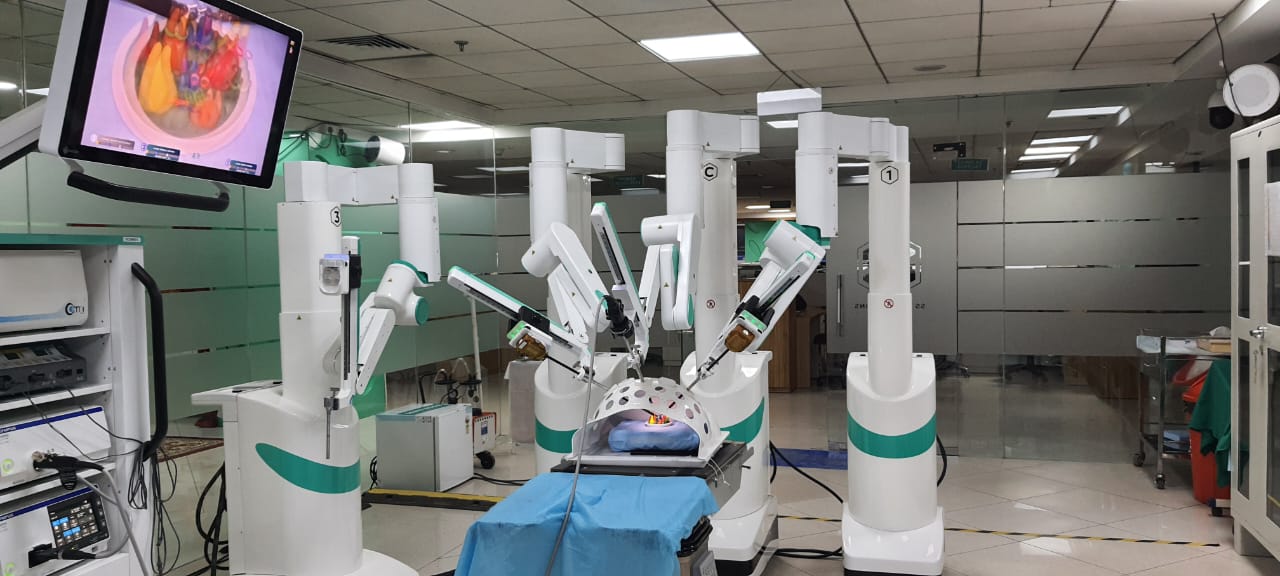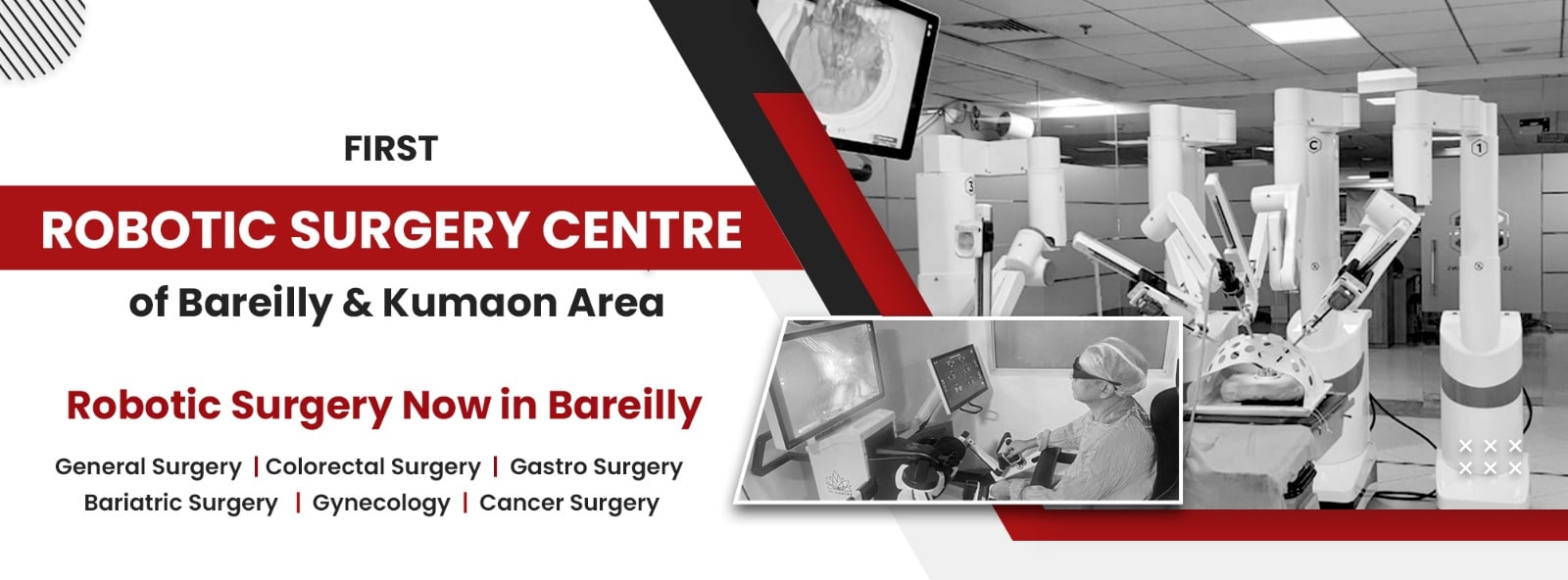
What is Robotic Surgery?
Robotic cancer surgery in Bareilly is a type of minimally invasive or laparoscopic (small incision) specialized surgical procedure. The robot's "hands" have a high degree of dexterity, allowing surgeons to operate in very small areas of the body where open (long incision) surgery would normally be required. Robotic and minimally invasive surgery have smaller incisions than open surgery (traditional surgery with incisions), resulting in less discomfort and scarring. Using robotic technology, surgeons can carry out difficult surgical procedures through small incisions. Surgical robots are self-powered, computer-controlled machines that can be trained to assist in the positioning and manipulation of surgical instruments. Resulting in improved surgical precision and flexibility
Benefits of Robotic Surgery
Two-dimensional imaging, restricted functional mobility of the instruments, and poor ergonomic posture of the surgeon are some drawbacks of laparoscopic surgery. The robotic surgery system was developed to address laparoscopy’s limitations. The benefits of robotic-assisted laparoscopic surgery include better visibility and dexterity. Relative to conventional laparoscopy, this new approach offers undeniable technical benefits. 3D imaging, tremor screening, and articulated instruments are among the features of robotic systems. Because of the enormous increases in vision and control possible with this advanced equipment, robotic surgery outperforms traditional laparoscopic surgery. Robotic systems are being researched more and more for productivity and overall usability.
As compared to open surgery, robotic surgery has a number of advantages for patients, including:
- Less time in the hospital
- Less pain and suffering
- Quicker recuperation and resumption of routine activities
- Incisions which are smaller, leading to a lower risk of infection
- Minimal scarring and blood loss
The Robotic System is meant to let surgeons deliver the benefits of minimal access surgery to patients. Individually cart-mounted arms let it move between operation theaters, giving your surgical team constant access to patients. The AI Robotic System allows therapists the freedom of port placement while providing the benefits of compact fully wristed devices by bio-mimicking the human arm. The system also offers 3D HD vision, simple instrument control, and a variety of ergonomic working positions, all of which have been created to aid surgeons reduce stress and tiredness and lengthen their career.
How does Robotic Surgery work?
The surgeon is seated next to the patient at a surgical console. The surgeon operates from a console while viewing the surgical field through a magnified three-dimensional (3D) picture (up to 10 X magnifications) simultaneously, the surgeon’s hand gestures are flawlessly transmitted to the robot, allowing the procedure to be completed. It is important to remember that the surgeon is the only one who manages the robot because it can’t make judgments on its own. Every phase of the procedure is carried out with the surgeon’s direct input.
Procedures carried out with the help of Robotic Surgery?
Through the universal surgical robotic system there are varieties of surgeries that can be performed. They are as follows:
General Surgery
- Cholecystectomy
- Heller’s Myotomy
- Inguinal Hernia Repair
- Ventral Hernia Repair Procedures
- Hiatal Hernia Repair
- Gastrectomy
- Whipple’s Procedure
- Splenectomy
- Hepatic Resection
- Nissen fundoplication
Colorectal and upper GI procedures
- LAR/ APR
- Right Hemicolectomy
- Left Hemicolectomy
- Sigmoidectomy
- Transverse Colectomy
Bariatric
- Sleeve Gastrectomy
- Gastric Bypass
- Mini Gastric Bypass
Gynecology
- Hysterectomy
- Radical Hysterectomy
- Myomectomy
- Endometriosis Resection
- Sacro-colpopexy
- Sacro-hysteropexy
- Ovarian Cystectomy
- Salpingo- Oophorectomy
Thoracic
- Transthoracic Esophagectomy
- Pulmonary Lobectomy
- Mediastinal Mass Resection
- Thymectomy
Urology
- Nephrectomy
- Partial Nephrectomy
- Radical Prostatectomy
- Radical Cystectomy
- Pyeloplasty
- Uretero-ureterostomy
- Adrenalectomy
- Nephroureterectomy
- Ureteral Reimplantation
- Cysto-prostatectomy
